Part of periodic carburetor maintenance involves replacing the fuel filter(s). I personally recommend replacing them once a year regardless of how often a vehicle gets driven.
To print a copy of this article or save a copy for reference please click on this link: Holley Filters PDF.
On most Holley carburetors, the filters are located in a cavity inside the float bowls just behind the fuel inlet fittings where the fuel lines attach to the float bowls. Removal & replacement is a relatively simple procedure, the only potential issues are installing the components in an incorrect manner and damaging the fuel inlet threads (i.e. cross-threading).
The following will guide you through the removal & reinstallation process for most Holley carburetors.
Below you will see the bronze filter element which is partially visible through the fuel inlet opening in the fuel inlet fitting.
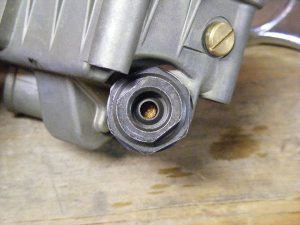
Begin by carefully removing the fuel inlet fitting using the appropriately sized open-end wrench. Most Holley carburetors (and many Quadrajets as well) will require a 1″ wrench. Be sure to use a quality wrench to avoid damaging the fitting.
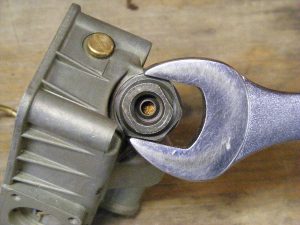
Below are all of the components as removed from the carburetor. From left to right:
-Fuel inlet fitting
-Fuel filter gasket (small)
-Fuel inlet fitting gasket (large)
-Filter element
-Filter bypass spring
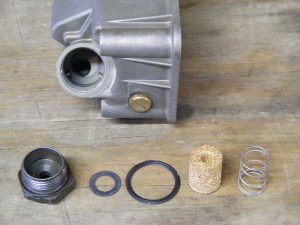
Once you have removed the old filter, clean the inlet fitting as required and begin the reassembly process by placing the large gasket over the threads on the inlet fitting as seen below.
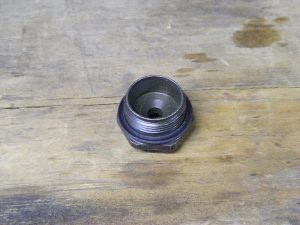
Next, place the small filter gasket into the fitting, making sure it sits flush into the cavity. I have the gasket propped up in the fitting here just to make it easier to see.
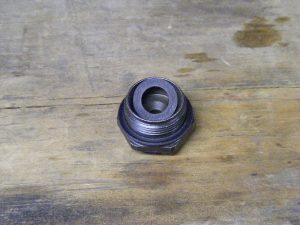
Next you will install the filter element, making sure to install it in the correct direction as seen here.

Next you will reinstall the filter bypass spring into the filter cavity. The spring is here to allow fuel to bypass the filter and allow fuel to enter the float bowl should the filter become clogged.

The final step is to carefully reinstall the filter and inlet fitting assembly. A drop of oil on the inlet fitting threads is a good idea, and you must make certain the bypass spring does not get turned sideways in the cavity as you compress it to start the threads. ALWAYS start the fitting by hand for 2-3 turns, then you can use a wrench to fully tighten the fitting.

And there you have it, that’s all there is to replacing a fuel filter. Again, I personally recommend that fuel filters should be replaced once a year regardless of how often the vehicle is in use. Condensation and certain additives can quickly foul a filter, so they should be considered a routine maintenence item. Besides, they’re cheap insurance compared to the cost of a full rebuild if a carb gets fouled by dirty fuel and debris.
To print a copy of this aticle or save a copy for reference please click on this link: Holley Filters PDF.

